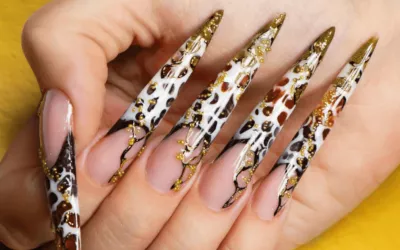Nails have been an integral part of construction, carpentry, and various other crafts for centuries. These small, versatile fasteners have played a significant role in shaping human civilization and advancing our ability to build and create.
But have you ever wondered when nails were invented and how they have evolved over time? In this captivating journey through history, we will explore the origins of nails, their invention, and the remarkable transformations they have undergone.
Get ready to discover the fascinating story behind the creation of this essential tool!
Ancient Origins
The use of nails dates back thousands of years, with evidence of their existence found in ancient civilizations.
While the exact origins of nails are difficult to pinpoint, it is believed that the earliest known nails were made of copper or bronze.
Egyptian Nails: In ancient Egypt, nails were hand-forged from copper and used in construction and woodworking.
These early nails were flat, tapering to a point, and were likely driven into wood with a stone or wooden mallet.
Roman Nails: The Romans further developed the art of nail-making by introducing iron nails. These nails were typically square-shaped with a tapered point, crafted through the process of forging.
Iron nails offered greater strength and durability compared to their copper counterparts.
The Middle Ages
During the Middle Ages, nail production continued to evolve, influenced by advancements in metalworking techniques and the availability of materials.
Wrought Iron Nails: Wrought iron became the preferred material for nail production during this period. Blacksmiths hand-forged nails by heating iron rods and shaping them into the desired form.
These nails had a square or rectangular cross-section, with a tapered point and a decorative head.
Cut Nails: In the late Middle Ages, the process of nail production underwent a significant transformation with the introduction of cut nails.
Cut nails were created by cutting them from sheets of iron using shears or guillotine-like devices. This innovation allowed for mass production of nails, making them more accessible and affordable.
Industrial Revolution and Modern Era
The Industrial Revolution marked a turning point in nail production, as new technologies and machinery revolutionized the manufacturing process.
Wire Nails: In the early 19th century, wire nails emerged as a game-changer in the nail industry.
Wire nails were produced by drawing wire through a machine that cut and shaped the nails in one continuous process.
This method significantly increased production speed and efficiency, making nails more readily available.
Machine-Made Nails: The invention of nail-making machines further transformed the industry. Machines could produce nails at an astonishing rate, automating the process and reducing labor requirements.
These machines could produce nails in various shapes and sizes, catering to a wide range of construction and carpentry needs.
Nails Today
In the present day, nails continue to be an essential component of construction, woodworking, and various other industries.
However, advancements in technology and materials have brought about further improvements in nail design and performance.
Coated Nails: Modern nails often come with protective coatings to enhance their durability and resistance to corrosion.
Common coatings include galvanized coatings and specialized finishes, ensuring the longevity of nails in various environments.
Specialized Nails: With advancements in construction techniques and materials, specialized nails have emerged to meet specific needs.
Examples include roofing nails, flooring nails, and framing nails, each designed for optimal performance in their respective applications.
Nail Guns: The advent of nail guns revolutionized the speed and efficiency of nail installation in construction.
Nail guns use compressed air or gas to drive nails into surfaces quickly and accurately, reducing manual effort and increasing productivity.
Conclusion
Nails have come a long way since their humble beginnings in ancient civilizations.
From copper and bronze nails in ancient Egypt to the mass-produced wire nails of the Industrial Revolution and the advanced coatings and specialized designs of modern times, nails have evolved alongside human ingenuity and technological advancements.
Understanding the history of nails not only deepens our appreciation for their significance but also sheds light on the remarkable progress we have made in construction and craftsmanship.
So, the next time you drive a nail into wood, take a moment to reflect on the fascinating journey this simple yet vital tool has undertaken throughout the ages.
















